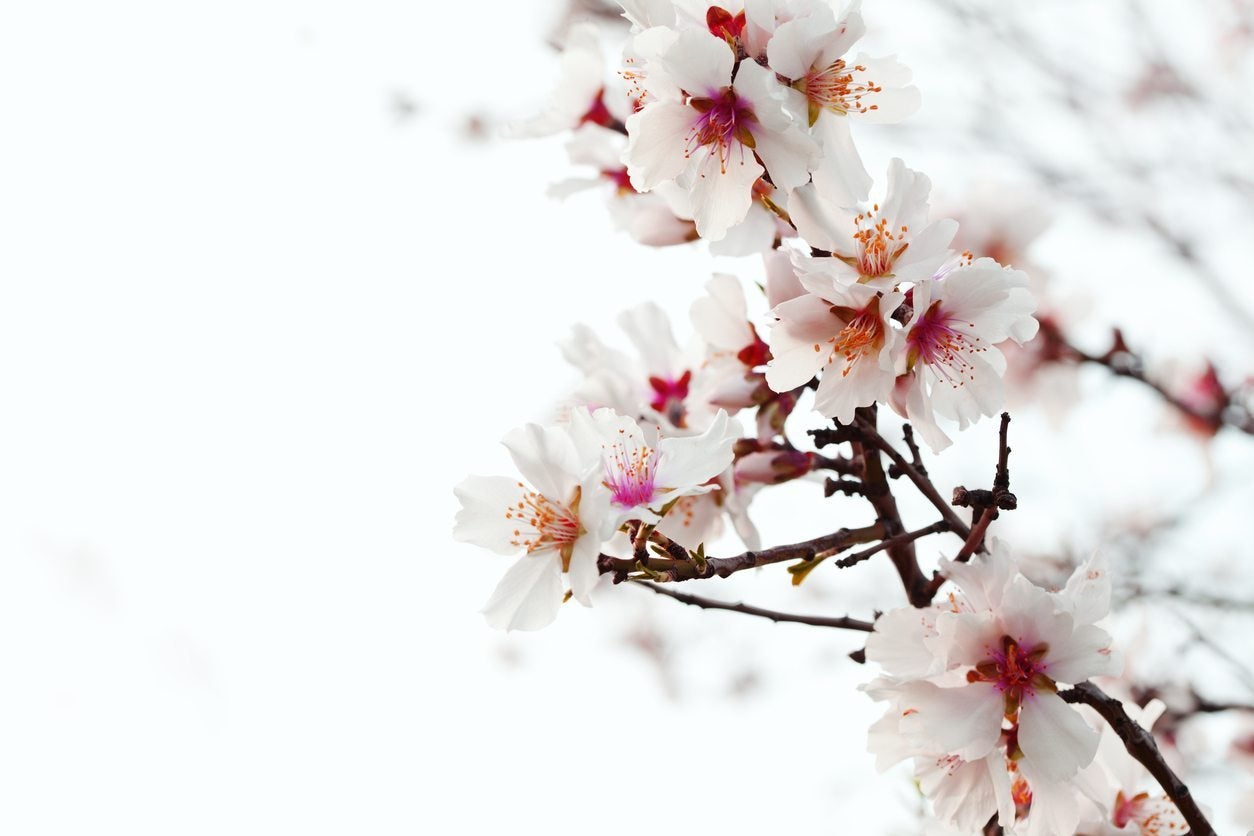Almond Tree Hand Pollination: How To Hand Pollinate Almonds

Almonds are one of the most valuable bee-pollinated crops. Every February, about 40 billion bees are trucked to almond orchards in California to help produce the world’s largest almond harvest. With the decline in honeybee populations, home almond growers may wonder, “Can you pollinate almonds by hand?”. Hand pollinating almond trees is possible, but it is a slow process, so it’s only a possibility on a small scale.
How to Hand Pollinate Almonds
When almond flowers open in the early spring, the flowers should be pollinated as quickly as possible to ensure a good yield. Each almond flower has many stamens (the flower’s male parts) and one pistil (the flower’s female part). When the flowers are ready, the yellow, dusty pollen will be visible on the anthers, the kidney-shaped structures on the ends of the stamens. To achieve pollination, a pollen grain must come to rest on the stigma, the surface at the end of the pistil, of a compatible flower. Most almond varieties produce flowers that are self-incompatible. For genetic reasons, pollen from each tree cannot effectively pollinate flowers on the same tree. You’ll need two trees of different varieties. Before planting, make sure the two varieties are compatible and that they will be in bloom at the same time. To pollinate almonds, transfer pollen from flowers on one tree into a jar, and immediately bring the pollen to another tree. Then, use a piece of cotton or a paintbrush to lift some of the pollen and brush it onto the stigma of another tree. Or, remove several flowers laden with pollen from one tree and touch the pollen-bearing anthers to the stigmas of flowers on the other tree. Almond tree hand pollination is easier if you have a self-fertile variety, such as All-in-One, Tuono, or Independence®. In that case, you can transfer pollen from one flower onto another flower on the same tree, or even from an anther to the stigma within the same flower. The wind can also help these trees self-pollinate.
Alternatives to Hand Pollinating Almond Trees
Hand pollination is necessary where bees are not available. And hand pollination may allow an even higher percentage of flowers to develop into mature nuts than bee pollination does – if you can reach all the flowers, that is. However, hand pollination is quite labor intensive, and you might have difficulty reaching flowers high in the tree. If you have more than a few almond trees, renting a hive is the best way to ensure pollination. Attract bumblebees and other wild bees to your property by providing a source of water and planting other bee-pollinated flowers. Avoid using insecticides on your property, especially during the almonds’ flowering time, to prevent harm to the bees.
Sign up for the Gardening Know How newsletter today and receive a free copy of our e-book "How to Grow Delicious Tomatoes".
Ilana Goldowitz Jimenez is a scientific and agricultural writer with a B.S. in Plant Sciences from Cornell University and a PhD in Chemical Biology and Infectious Disease from Harvard University.